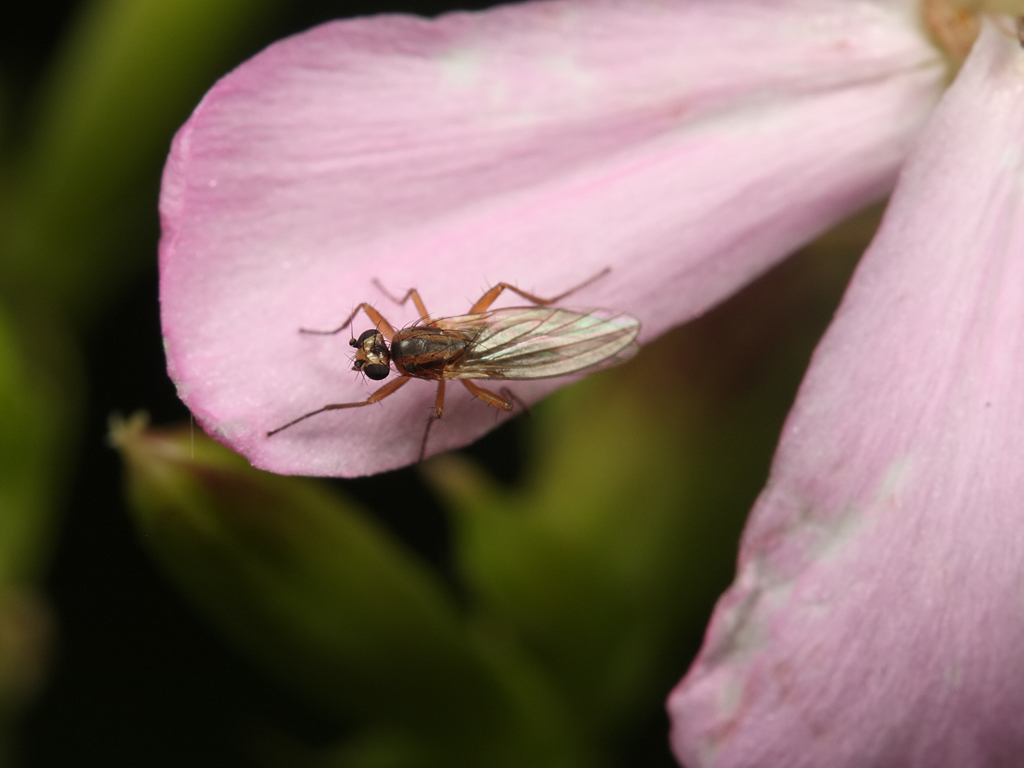Posted by Juergen Peters on 12-10-2012 23:41
#5
Hello, Mark!
Mark-uk wrote:
Lonchoptera lutea - female
These flies are numerous here in northwest Germany these days, too. Beside some rarer species
Lonchoptera lutea and
bifurcata are said to be most abundant. Could you please tell me, how you distinguish these two from a photo? Below one I shot on September-21 in a forest.
Posted by Mark-uk on 15-10-2012 20:44
#6
Often I go on 'look' - having gone through a few thousand this year alone.
I couldn't be 100% about the one in your photo, but it looks to have a ventral bristle about two thirds down the middle tibia. Which when separating
Lonchoptera lutea and
bifurcata, would make it
bifurcata (some other
Lonchoptera have this bristle too - but most are separated other ways) the vertical bristles are light in
bifurcata and dark in
lutea. If they are males they will
lutea (unles you are really lucky - even so the genitalia are small in
bifurcata if you where to find one). There is also something about the back of the jowels that I can't put into words.
In southern England I would say I have about 20%
bifurcata/80%
lutea, thought varies from site to site - it would interesting to know how this compares the the rest of Europe?
I have had two nice finds of
L. nitidifrons this year. I have found two
L. nigrociliata at a site where I found two
L. meijerei last year, on fast flowing rivers - not the normal habitat for either species.
L. tristis are normally an autumn species, but found some mid summer this year - this I put down to the very wet weather, there are still a few about. Try looking on rather damp beech leaf litter, this seems to be a favoured location, easy to spot in the field, they are slightly larger than
bifurcata/lutea and an even consistent brown colour. The males have a distinctive bent mid tibia. It would be nice to have a photo of one on this site.
L scutellata still eludes me, but has been found by other collectors at sites I visit often.

